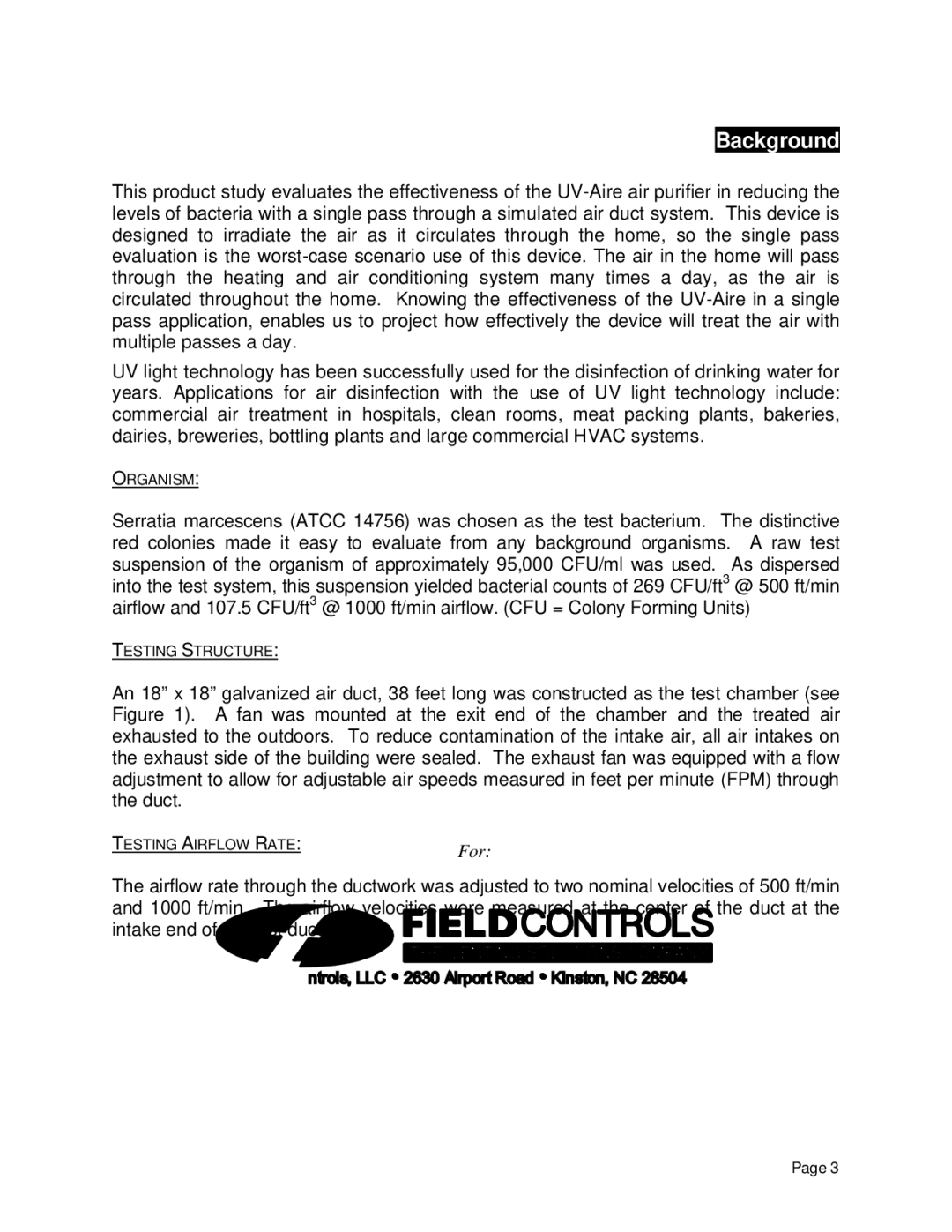CC 2000 specifications
The Field Controls CC 2000 is a sophisticated indoor air quality (IAQ) solution designed to enhance the comfort and health of residential and commercial spaces. This innovative product primarily functions as a complete combustion management system, integrating advanced technology to monitor and optimize the performance of heating systems.One of the standout features of the CC 2000 is its intelligent control system. The device utilizes a microprocessor-based design that allows for real-time monitoring of the combustion process, ensuring that gas and oil heating systems operate at peak efficiency. By analyzing various parameters, such as oxygen levels and flue gas temperatures, the CC 2000 can automatically adjust the system settings, minimizing harmful emissions and enhancing fuel efficiency.
In terms of user-friendliness, the CC 2000 comes equipped with a clear and intuitive display interface. This feature allows users to easily access vital system information, including performance metrics and diagnostics. The built-in alarms and notifications also keep users informed of any potential issues, enabling proactive maintenance and reducing the likelihood of costly repairs.
Another significant advantage of the Field Controls CC 2000 is its versatile compatibility. It is designed to work seamlessly with a variety of heating systems, including conventional and high-efficiency boilers and furnaces. This flexibility makes it an ideal choice for both new installations and retrofitting existing systems, ensuring enhanced performance across different applications.
Safety is a primary concern in fuel combustion, and the CC 2000 addresses this with its comprehensive safety features. The system is equipped with multiple sensors that detect hazardous conditions, such as flue gas leaks or excessive temperatures. In the event of a hazardous situation, the CC 2000 automatically shuts down the heating system to prevent accidents, providing peace of mind to users.
In summary, the Field Controls CC 2000 is a cutting-edge solution for improving indoor air quality and heating system efficiency. With its intelligent controls, user-friendly interface, versatile compatibility, and robust safety features, the CC 2000 provides a comprehensive approach to managing combustion-based heating systems. It supports a commitment to both environmental responsibility and user well-being, making it a valuable addition to any HVAC setup. As the importance of clean air continues to grow, devices like the CC 2000 are essential in creating healthier indoor environments.
